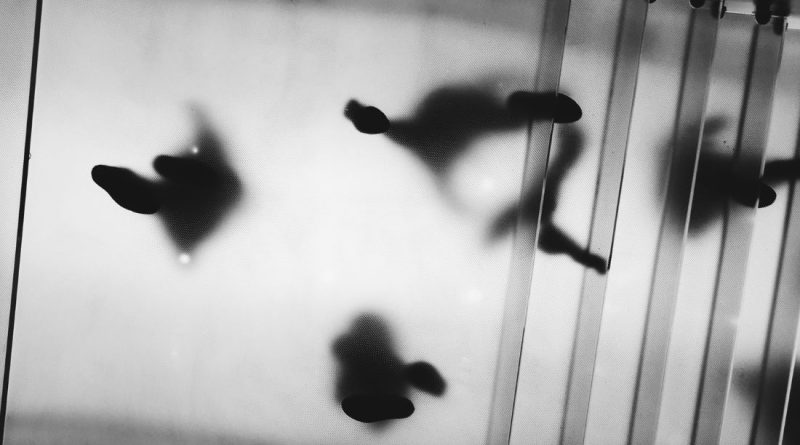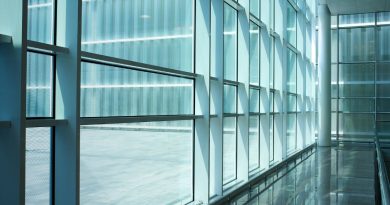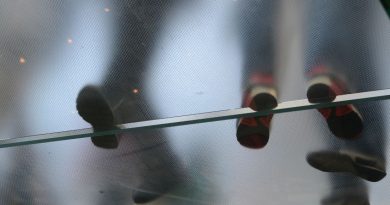Innovative Uses of Structural Glass Floor Detail in Design
In modern architecture, structural glass floor detail plays a pivotal role in creating innovative, elegant, and functional spaces. This design element not only integrates natural light into interiors but also offers remarkable visual appeal. This article explores the various aspects of structural glass floors, including their benefits, applications, technical considerations, and future trends in architecture.
Understanding Structural Glass Floor Detail: An Architectural Overview
What is Structural Glass?
Structural glass is specially designed to support weight and withstand stress while remaining transparent. It is often used in flooring systems, facades, and other architectural features. Using structural glass in floor design creates visually striking environments that merge internal and external spaces.
Components of Structural Glass Floor Detail
A structural glass floor detail includes several key components:
- Glass Panels: These primary elements bear the load and are thicker and more durable than standard glass to ensure safety and stability.
- Support Framework: Made of steel or aluminum, this framework holds the glass panels in place and must be robust to support the glass and any additional loads.
- Sealing and Waterproofing: Proper sealing prevents water ingress and ensures longevity. This involves using adhesives and sealants that withstand environmental factors.
- Finishing Details: Aesthetic enhancements may include edge finishes, lighting, and integration with other materials like wood or stone.
The Role of Engineering in a Structural Glass Floor
Implementing a structural glass floor requires collaboration between architects and structural engineers. Engineers analyze load-bearing capacities, safety factors, and environmental impacts to ensure that the design is both beautiful and functional. This teamwork is essential for achieving a cohesive look while maintaining structural integrity.
Benefits of Incorporating Structural Glass in Modern Design
Aesthetic Appeal
One major advantage of structural glass floors is their aesthetic appeal. They create an illusion of space and light, making interiors feel more open and inviting. The transparency allows for unique design possibilities, such as showcasing beautiful landscapes or intricate architectural details below.
Enhanced Natural Lighting
Glass floors maximize natural light within a space. This is especially beneficial in commercial settings, where good lighting can improve mood and productivity. Bringing sunlight into lower levels can reduce reliance on artificial lighting, leading to energy savings.
Flexibility in Design
Structural glass floors offer remarkable design flexibility. They can create dynamic spaces like glass bridges, walkways, and exhibition areas. This versatility allows architects to explore creative solutions that traditional materials may not accommodate.
Durability and Maintenance
Advancements in glass manufacturing have led to highly durable products that withstand heavy foot traffic and harsh conditions. Glass floors are typically easier to clean than traditional flooring, requiring minimal maintenance to keep them looking good.
Innovative Applications: Showcasing Stunning Examples
Residential Spaces
In residential design, structural glass floors create breathtaking features. For example, a glass floor over a basement or pool allows homeowners to enjoy stunning views while adding a contemporary touch. The structural glass floor detail can also serve as a focal point in living areas, dining rooms, or entryways.
Commercial Environments
Structural glass floors are popular in commercial spaces. Retail stores, restaurants, and museums use glass flooring to enhance customer experiences. For instance, a high-end retail store might feature a glass floor that showcases the products below, creating an engaging shopping environment.
Public Spaces and Installations
Public art installations and architectural landmarks often use glass floors to create interactive experiences. Museums may employ glass flooring to let visitors see archaeological sites or art displays beneath their feet. These installations engage visitors and connect the past with the present.
Bridges and Walkways
Glass bridges and walkways represent one of the most innovative applications of structural glass floors. These installations allow pedestrians to walk above stunning landscapes, offering a unique perspective. Walking on glass can be thrilling and awe-inspiring, making it a popular choice for tourist attractions and parks.
Technical Considerations for Implementing Glass Floors
Load-Bearing Capacity
A primary concern when designing structural glass floors is their load-bearing capacity. Engineers must conduct thorough calculations to ensure the glass supports the intended weight, including foot traffic and furniture. This process involves selecting the right type and thickness of glass.
Thermal Performance
Glass has unique thermal properties compared to traditional flooring materials. Considering thermal performance is essential when designing structural glass floors, especially in extreme climates. Insulated glass units can improve energy efficiency and comfort.
Installation Techniques
Installing structural glass floors requires specialized skills and equipment. Proper handling and placement of glass panels are crucial to avoid breakage and ensure safety. Work with experienced contractors who understand the nuances of glass installation.
Building Codes and Regulations
Before implementing structural glass floors, familiarize yourself with local building codes and regulations. These guidelines dictate safety standards, load requirements, and installation practices. Compliance is essential to ensure the safety of the structure and its occupants.
Safety and Maintenance Tips for Structural Glass Installations
Safety Considerations
When designing and installing structural glass floors, prioritize safety. Key safety considerations include:
- Use Laminated Glass: Laminated glass sandwiches a layer of polyvinyl butyral (PVB) between two layers of glass. This type holds together if shattered, reducing injury risk.
- Regular Inspections: Conduct routine inspections to check for wear, damage, or structural issues. Early detection can prevent accidents and prolong the installation’s lifespan.
- Proper Signage: In public spaces, place signage to inform visitors about potential hazards, such as slippery surfaces when wet.
Maintenance Strategies
Maintaining structural glass floors is straightforward but needs attention. Effective maintenance strategies include:
- Cleaning: Use non-abrasive cleaners and soft cloths. Regular cleaning prevents dirt buildup, ensuring the floor remains clear and visually appealing.
- Sealant Maintenance: Ensure sealants around the glass edges are in good condition. Replace damaged sealants promptly to prevent water ingress.
- Protective Coatings: Apply protective coatings to enhance scratch resistance and minimize fingerprints and smudges.
Future Trends: The Evolving Role of Glass Floors in Architecture
Sustainable Design
As the architectural industry prioritizes sustainability, structural glass floors will likely evolve. Innovations in glass technology may lead to more energy-efficient products, such as self-cleaning or solar-paneled glass, contributing to green building certifications.
Integration with Smart Technology
The future of architectural glass may involve integrating smart technology. Imagine glass floors that change opacity for privacy or adjust temperature based on environmental conditions. These advancements could enhance functionality and appeal.
Customization and Personalization
As technology advances, customizing glass floors will become more accessible. Architects may offer bespoke solutions that allow clients to personalize their glass flooring with unique designs, colors, or embedded graphics.
Increased Adoption in Various Sectors
While structural glass floors are prevalent in high-end residential and commercial spaces, expect increased adoption across various sectors, including healthcare, education, and hospitality. As more architects recognize the benefits, applications will likely expand, leading to innovative designs.
| Future Trend | Description | Potential Impact on Design |
| Sustainable Design | Development of energy-efficient glass products, including self-cleaning and solar-paneled glass. | Enhances green building certifications and reduces energy costs. |
| Integration with Smart Technology | Use of smart glass that can change opacity and temperature based on environmental conditions. | Increases functionality and user comfort in architectural spaces. |
| Customization and Personalization | Advanced technology allows for bespoke glass flooring solutions tailored to client preferences. | Provides unique design opportunities and personal expression. |
| Increased Adoption in Various Sectors | Broader use of structural glass floors in healthcare, education, and hospitality sectors. | Expands market potential and enhances aesthetic appeal in diverse settings. |
The innovative use of structural glass floor detail has transformed how we perceive and interact with our environments. From enhancing aesthetic appeal and natural lighting to providing unique design possibilities, glass floors are vital in modern design. As we look to the future, the evolving role of glass floors will continue to push the boundaries of architectural creativity, sustainability, and technology. By embracing these trends, architects can create stunning spaces that inspire and engage users for years to come.



